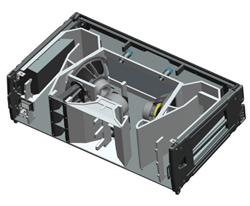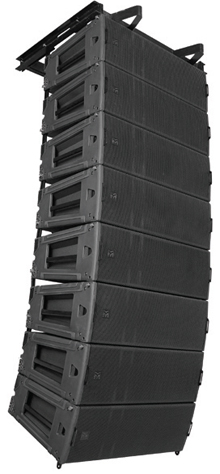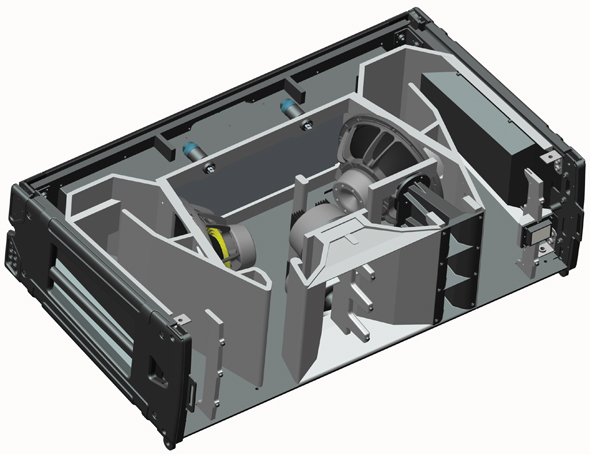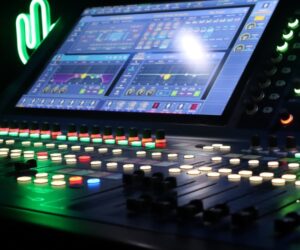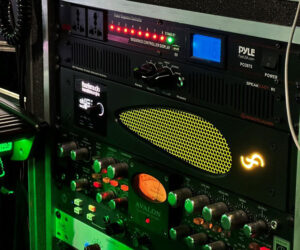
Every so often, a product arrives that is truly revolutionary, rather than merely evolutionary.
At first glance, the new Martin Audio MLA system simply embodies numerous refinements from the company’s previous large-format Longbow and medium-sized W8LC horn-loaded line arrays.
To review, Longbow has a horn-loaded 15-inch with dual 8-inch and quad horns loaded with 1-inch drivers, crossed over at 220 and 2,700 Hz and weighing 270 pounds, while the smaller, 128-pound W8LC uses a horn-loaded 12 with dual 6.5-inch mids and triple horns, crossed at 300 and 3,000 Hz.
Horn-loading has been a hallmark of Martin Audio for over 40 years, which now provides the industry’s only all horn-loaded line arrays.
Martin Audio R & D Director Jason Baird provides us with a tour of the new system.
MLA stands for Multi-cellular Loudspeaker Array, and it looks and flies like a typical line array but with unique concepts behind its performance.
This is a fully integrated system, self-powered with 6 channels of amplification and DSP, networked with both audio and control on the same cable.
What’s Inside
MLA employs dual 12-inch low-frequency drivers using the company’s trademark “Hybrid” loading.
Both woofers share a common reflex-loaded back chamber between them to extend their bass response, while each also fires into its own folded horn that provides efficiency and punch.
The mid-range section uses dual horn-loaded 6.5-inch mid-range cones and three 1-inch compression drivers. Crossover frequencies are 300 and 3,900 Hz.
The midrange has been optimized with high power handling, high sensitivity and constant directivity. Horn-loading mids and highs in separate cells allow each horn to correctly employ constant directivity geometry, providing consistent, controlled horizontal dispersion.
It is specified with consistent 90-degree horizontal dispersion as the 6 dB-down point, and provides -10 dB at 120 degrees.
With a mid-high crossover approaching 4 kHz, the design reduces distortion and mechanical stress from its 1-inch high-frequency drivers, which provides a sweeter and more extended sound than 2-inch drivers. This also allows the mid-range to cover the vocal range uninterrupted.
The midrange employs Martin Audio’s “toroidal phase bung” invented for the previous systems – basically a doughnut-shaped phase plug – to extend frequency response up to 3,500 Hz. To eliminate beaming above that, an M-shaped “HiBlade” – essentially a vertical vane – extends pattern control up through the 3,900 Hz crossover region.
The goal in each HF horn, unlike traditional line arrays, is a slightly curved wavefront optimized for real-world curved arrays. Furthering this end, each HF horn has a diamond-shaped patent-pending “Wedge” in its throat to equalize pathlength differences and accurately determine the curvature of the wave-form produced.
Because the HF and MF sections are “side-by-each,” their transition band has been minimized to a fraction of an octave using steep FIR crossover filters.


